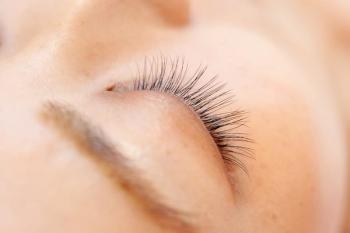
- November/December digital edition 2025
- Volume 17
- Issue 06
The A to Zzzs of ocular health
Sleep plays a pivotal role in maintaining ocular health.
The relationship between sleep and ocular wellness
Sleep is a fundamental pillar of health, and its role in ocular wellness is increasingly recognized within the clinical and scientific communities. The eyes, like all other organs, require adequate rest to recover from daily stressors, including light exposure, oxidative challenges, and metabolic demands. Without sufficient sleep, the natural recovery and repair processes are impaired, leading to a cascade of eye-related complications, such as dryness, strain, inflammation, and even heightened susceptibility to vision-threatening diseases. In this sense, optimal sleep habits are not only a matter of general well-being but also a key strategy in protecting vision and expanding the visual health span—the period of life free from significant ocular disease or disability.
Circadian rhythm and ocular regulation
Our sleep cycle, or circadian rhythm, orchestrates physiological functions across virtually every cell in the body. This rhythm is precisely regulated by the suprachiasmatic nucleus (SCN), a small structure within the hypothalamus that functions as the body’s “master clock.” The SCN synchronizes bodily functions to the rise and fall of the sun, ensuring that critical processes occur in harmony with environmental light cycles.
The synchronization between light and biological processes begins in the eye. Specialized receptors in the retina, called intrinsically photosensitive retinal ganglion cells, detect illumination levels independent of vision. These cells send light information directly to the SCN via the retinohypothalamic tract, thereby aligning the body’s internal clock with the external environment.1 This system not only regulates sleep-wake cycles but also influences hormone secretion, immune activity, and cellular repair—all processes essential for ocular health.
Artificial light and melatonin suppression
The advent of artificial lighting, followed by prolonged use of electronic devices, has dramatically altered human exposure to natural light-dark cycles. Under conditions of constant artificial illumination, the visual system becomes misaligned and melatonin secretion is disrupted.
Melatonin, often referred to as the “sleep hormone,” is secreted by the pineal gland primarily at night. While it does not directly cause sleepiness at physiological levels, it plays a vital regulatory role by initiating nighttime cellular repair. When artificial light, particularly short-wavelength blue light, suppresses melatonin production, numerous cellular processes—including DNA repair, mitochondrial function, and oxidative stress regulation—are compromised.2
Interestingly, not all light is detrimental. Exposure to blue light during the daytime hours is beneficial, as it helps suppress melatonin when wakefulness is needed, thereby maintaining circadian alignment. Moreover, studies indicate that sunlight exposure enhances mitochondrial melatonin production, providing additional antioxidant protection within tissues. Unfortunately, according to the US Environmental Protection Agency, the average person today spends less than 7% of their time outdoors, limiting beneficial sunlight exposure and replacing it with artificial light that fails to support the same biological processes.3
How much sleep is enough?
The question of adequate sleep remains central to ocular recovery. The Centers for Disease Control and Prevention recommends that most adults obtain at least 7 hours of sleep nightly, while children and adolescents require even more due to developmental demands. Failure to meet these thresholds compromises the circadian cycle and hinders ocular regeneration. Practical strategies for achieving proper sleep hygiene include the following:
- Reducing exposure to blue light several hours before bedtime
- Avoiding caffeine, alcohol, heavy meals, or strenuous exercise late in the evening
- Engaging in relaxation techniques such as meditation, breathing exercises, or gentle stretching
- Maintaining consistent sleep and wake times to reinforce circadian stability
- Consuming a diet rich in phytonutrients—vitamin E, carotenoids, flavonoids, β-carotene, lycopene, and lutein—all of which mitigate oxidative stress and support ocular tissues4
Antioxidants, glutathione, and cellular recovery
During sleep, the body undergoes essential processes of toxin removal and mitochondrial recovery. A key component of this defense system is glutathione, the body’s master antioxidant. By neutralizing free radicals, glutathione not only reduces oxidative stress in ocular tissues but also supports healthy neural function, immune response, and overall cellular homeostasis. Declining glutathione levels are linked to chronic inflammation and increased oxidative burden—factors that exacerbate poor sleep quality and ocular vulnerability.4
Glutathione levels can be supported through both dietary and supplemental strategies. N-acetylcysteine is a well-known precursor to glutathione synthesis, while foods such as cruciferous vegetables, garlic, avocados, and antioxidant-rich berries naturally enhance endogenous production.5 Maintaining robust antioxidant defenses is particularly important for the retina, an organ with one of the highest metabolic demands in the body.
Conclusion
Adequate sleep is not merely a lifestyle preference but a biological necessity for preserving ocular health. By securing 7 to 9 hours of restful sleep each night, minimizing artificial light exposure before bedtime, and adopting antioxidant-rich nutrition, individuals can protect against ocular surface disease, eye strain, and long-term degenerative conditions. As vision remains one of the most valued senses, prioritizing sleep represents a simple yet powerful strategy for maintaining lifelong ocular wellness.
References:
Mure LS. Intrinsically photosensitive retinal ganglion cells of the human retina. Front Neurol. 2021;12:636330. doi:10.3389/fneur.2021.636330
Wahl S, Engelhardt M, Schaupp P, Lappe C, Ivanov IV. The inner clock—blue light sets the human rhythm. J Biophotonics. 2019;12(12):e201900102. doi:10.1002/jbio.201900102
Henderson TA. Can infrared light really be doing what we claim it is doing? infrared light penetration principles, practices, and limitations. Front Neurol. 2024;15.doi:10.3389/fneur.2024.1398894
Raghu G, Berk M, Campochiaro PA, et al. The multifaceted therapeutic role of N-acetylcysteine (NAC) in disorders characterized by oxidative stress. Curr Neuropharmacol. 2021;19(8):1202-1224. doi:10.2174/1570159X19666201230144109
Evans JA, Johnson EJ. The role of phytonutrients in skin health. Nutrients. 2010;2(8):903-928. doi:10.3390/nu2080903
Li A, Zhang X, Guo Y, et al. The association between dry eye and sleep disorders: the evidence and possible mechanisms. Nat Sci Sleep. 2022;14:2203-2212. doi:10.2147/NSS.S378751
Lee JA, Han K, Min JA, Choi JA; Epidemiologic Survey Committee of the Korean Ophthalmological Society. Associations of sleep duration with open angle glaucoma in the Korea national health and nutrition examination survey. Medicine (Baltimore). 2016;95(52):e5704. doi:10.1097/MD.0000000000005704
Lei S, Liu Z, Li H. Sleep duration and age-related macular degeneration: a cross-sectional and Mendelian randomization study. Front Aging Neurosci. 2023;15:1247413. doi:10.3389/fnagi.2023.1247413
Nakayama LF, Tempaku PF, Bergamo VC, et al. Obstructive sleep apnea and the retina: a review. J Clin Sleep Med. 2021;17(9):1947-1952. doi:10.5664/jcsm.9312
Williams JA, Naidoo N. Sleep and cellular stress. Curr Opin Physiol. 2020;15:104-110. doi:10.1016/j.cophys.2019.12.011
Articles in this issue
3 days ago
The microbiome in diabetes and DRNewsletter
Want more insights like this? Subscribe to Optometry Times and get clinical pearls and practice tips delivered straight to your inbox.


















































.png)


